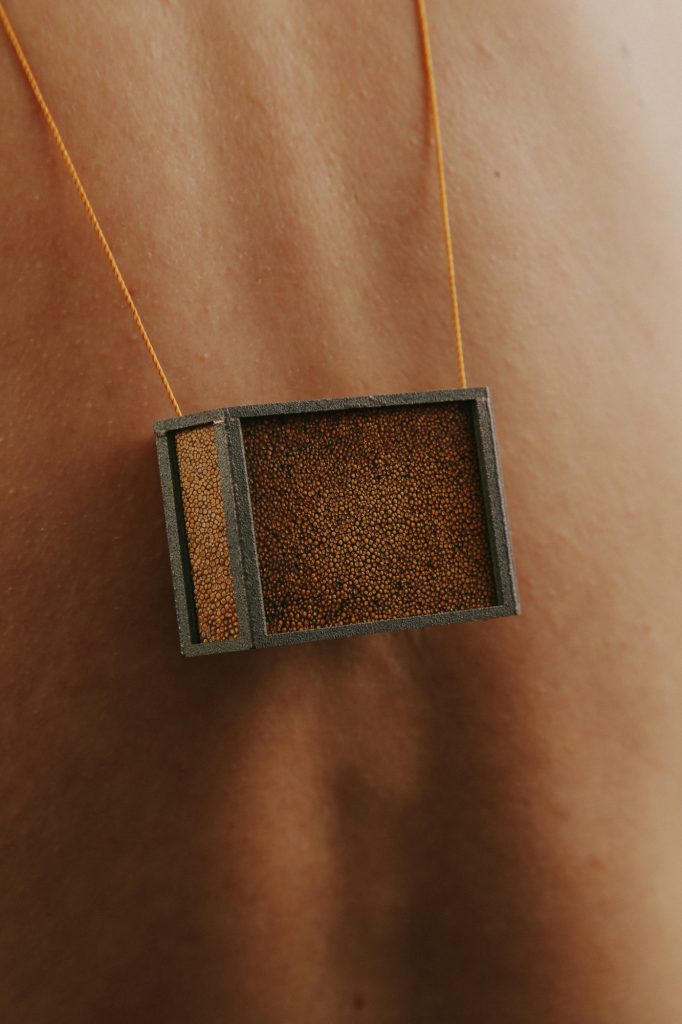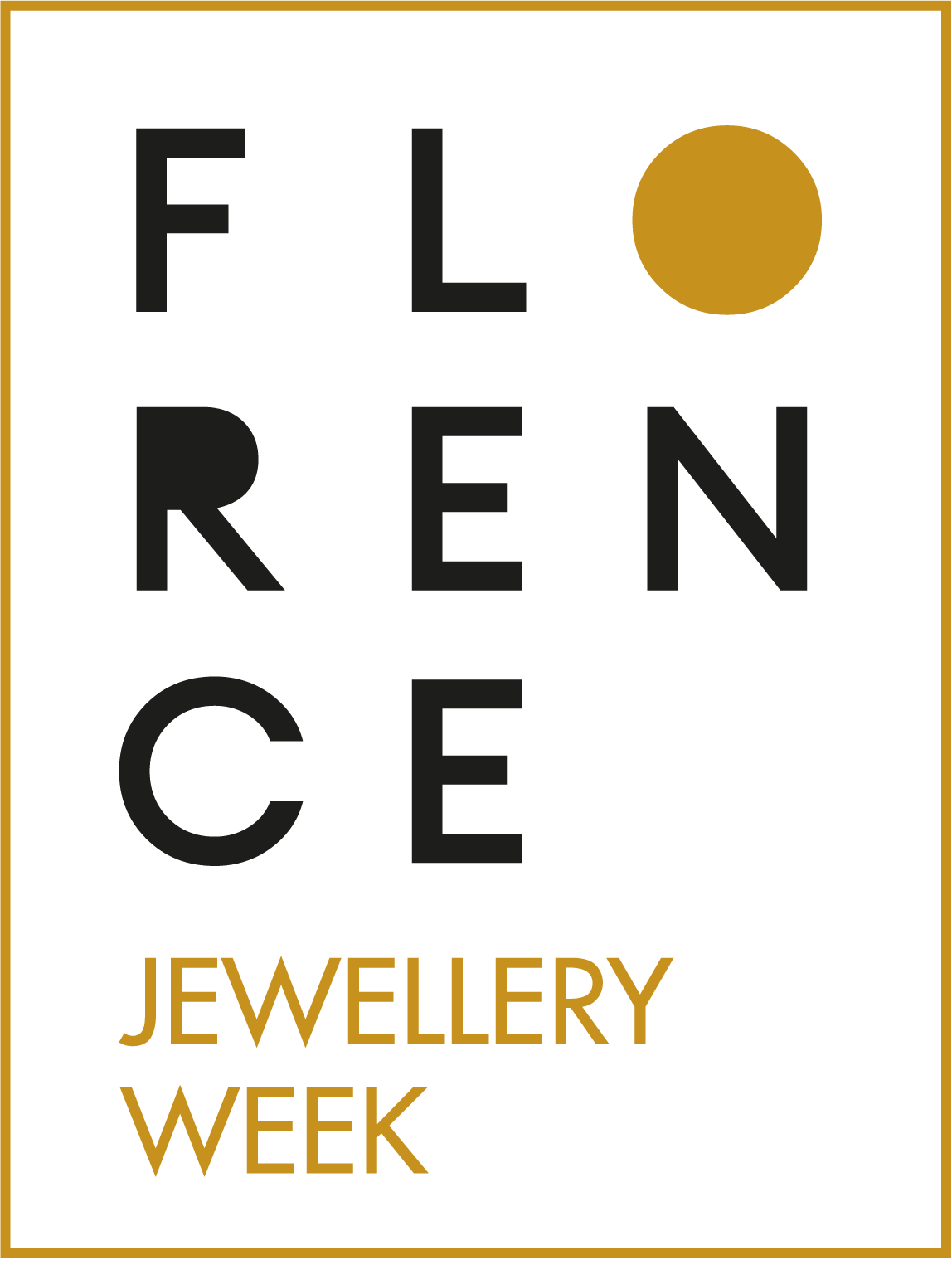I interviewed Rachael Colley, one of the seven winners of Preziosa Young 2020, the international contest organised by Le Arti Orafe Jewellery School, the first school dedicated to contemporary jewellery in Italy, founded in 1985 in Florence by Giò Carbone.
Since 2008, Preziosa Young has promoted the creativity of the younger generations, rewarding the proposal of innovative concepts, techniques and materials used, in order to create unique jewels.
This year the winners are all women, selected from 147 applications from all over the world by an international jury composed by curators, artists and jewellery critics, like Giovanni Corvaja, Eugenia Gadaleta, Kazumi Nagano, Cóilín O’Dubhghaill, Renzo Pasquale, Carla Riccoboni, Sam Tho Duong.
Rachael Colley will have the opportunity to show her “Sha-green” jewellery series in occasion of the travelling exhibition PREZIOSA YOUNG 2020, together with Elwy Schutten, Chia-Hsien Lin, Marie Masson, Jess Tolbert, Dongyi Wu and Zihan Yang, the other winners of this PY edition.
The exhibition starts in Florence in October, then moves to Spain and Germany next year:
- 29th October – 8th November 2020, Galleria del Palazzo Enrico Coveri, Florence
- 13th January – 3rd February 2021, Hannah Gallery, Barcelona
- 12th – 28th February, Atelier Martina Dempf, Berlin
- Oratory of San Rocco, Padua.
The exhibition was supposed to take place in May during Florence Jewellery Week, cancelled like many other cultural events due to the consequent restrictions caused by Covid-19, and specifically for that reason other dates and locations are being defined.
The young British jewellery designer Rachael Colley tells us how she manages to convert food waste into vegan jewellery, as an alternative material to those used in the luxury industry:

Sha-green, Ring, 2019. Citrus fruit peel, sintered aluminium. Denatured citrus fruit peel and sintered aluminium. 22 x 31 x 29 mm. Photo credits: Joe Horner
- When dealing with contemporary goldsmith artists or jewellery designers, the first curiosity is to know how ornament has been chosen as the main means of expression. Why jewellery in particular and what was your training in this field?
RACHAEL COLLEY: Jewellery interests me as an artistic medium because of its close proximity to the body, making it intimate and personal. Art jewellery, as a field within Applied Arts, has always fascinated me because, unlike furniture design and ceramics, its function is not focused primarily on practical functionality but on communication and the wearer’s expression of their character, interests, sentimental attachments and emotions. I gained my BA (Hons) in 3D Design, specialising in Jewellery and Silversmithing, from Loughborough University in 2007 under the tutelage of Roberta Bernabei. I gained my MA in Goldsmithing, Silversmithing, Metalwork and Jewellery from the Royal College of Art in 2010, where my main tutor was Laura Potter. A series of strong female role models have supported me throughout my studies and career to date. I’m so grateful for all of the guidance and support I have and continue to receive.

Sha- green, Brooch, 2019. Citrus fruit peel, sintered aluminium, stainless steel. Denatured citrus fruit peel and sintered aluminium. 54 x 67 x 25 mm. Photo credits: Joe Horner
- In your work the issues of sustainability and recycling are fundamental. Do you think contemporary jewellery can contribute to the debate about the great problem of wasted food?
RACHAEL COLLEY: Absolutely, it can be helpful to highlight these issues in a tangible and sometimes surprising way. The series of jewellery I created, titled Sha-green, is tactile, sensory (it has a fruity fragrance) and comes alive when worn against the body, encouraging the wearer to become more physically conscious of these issues rather than just hearing the relevant statistics or reading about it in the news. The works are designed to come at the problem from left-field by providing a connection to food waste themes in an alternative, perhaps more subtle and sensitive way. The pieces could be seen as a form of ‘cause jewellery’, as they serve to highlight the issue and spark conversations around the subject of sustainability, both in life and in the context of jewellery design.

Sha-green, Pendant, 2019. Denatured citrus fruit peel, sintered aluminium, fabric cord. Denatured citrus fruit peel and sintered aluminium. 33 x 463 x 33 mm. Photo credits: Joe Horner
- To create your pieces you use discarded citrus food peel. This unusual material smells and has a limited lifespan. What technique do you use to make them?
RACHAEL COLLEY: I use a series of processes to denature the material which relate closely to traditional and more modern cooking methods, focusing on dehydration and applying heat. Where I can, I use the material’s natural properties to create attachments and connections. I don’t use any harmful chemicals to try to preserve the natural materials as it’s so important that they are able to be composted, reused or recycled, ideally providing nourishment as they re-enter a circular economy.
The lifespan of these compostable jewels hasn’t been fully tested as yet; however, under stable or controlled museum conditions (temperature, humidity, exposure to light, etc) their lifespan could easily correlate with that of other organic materials, such as wood. It’s the act of wearing that will ultimately weaken them, as the citrus fruit peel reacts to the wearer’s body temperature and moisture levels. Although this quality doesn’t make them particularly attractive to collectors, to me this makes them more interesting as it poses a question to the wearer – Do you choose to wear them, to give them a life and purpose, or would you keep them under control, safe and secure?

Sha-green, Bracelet, 2019. Citrus fruit peel, sintered aluminium. Denatured citrus fruit peel and sintered aluminium. 54 x 102 x 94 mm. Photo credits: Joe Horner
- Is there an artist or an artistic tendency that inspires or influences you particularly?
RACHAEL COLLEY: Since reading Cradle to Cradle: Remaking the Way We Make Things by McDonough and Braungart, I’ve been keen to more consciously approach my design start-point by first considering the product’s end-point. Circular Design presents the idea of a closed-loop economy where materials, nutrients, data, etc, are continuously repurposed and fed back into the system. This is a system that I believe, as jewellery designers and makers, we should all consider and work towards, as it’s clear that our traditional take-make-dispose economy will not support us in the long-term.

Sha-green, Pendant, 2019. Denatured citrus fruit peel, sintered aluminium, fabric cord. 72 x 30 x 420 mm. Photo credits: Joe Horner

